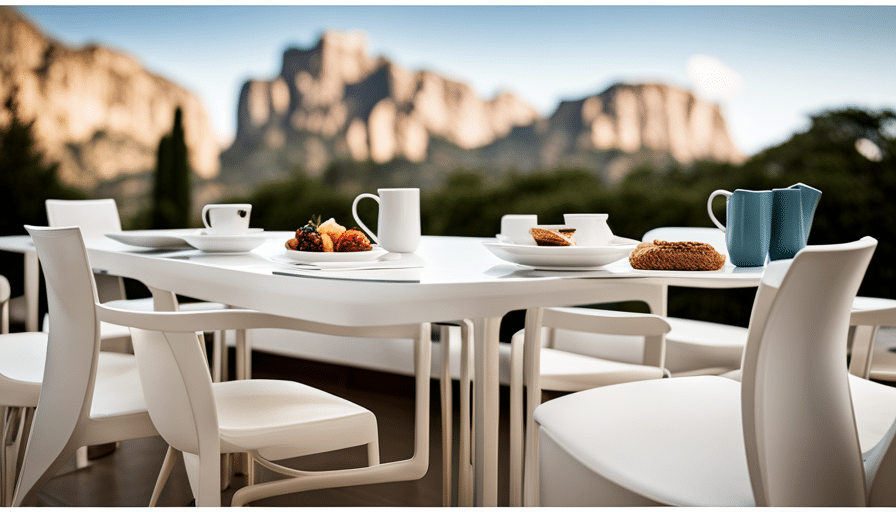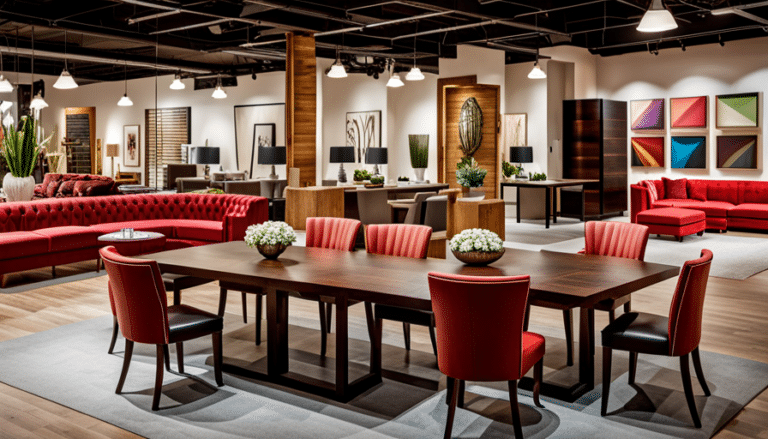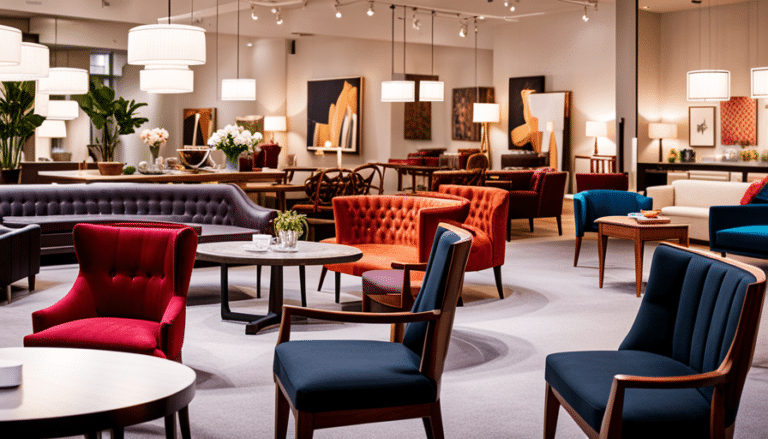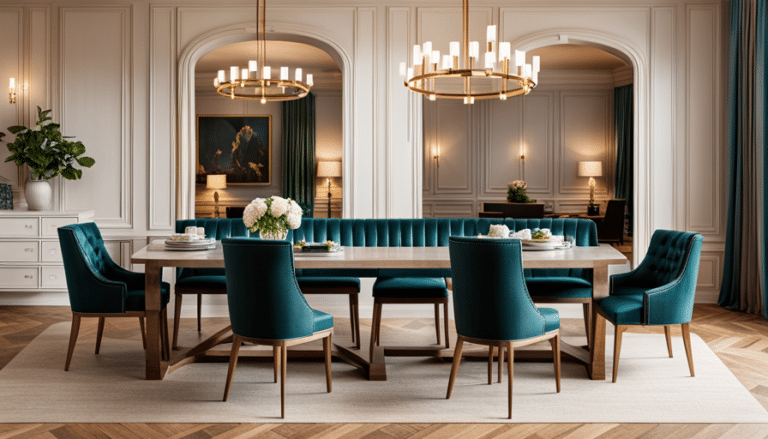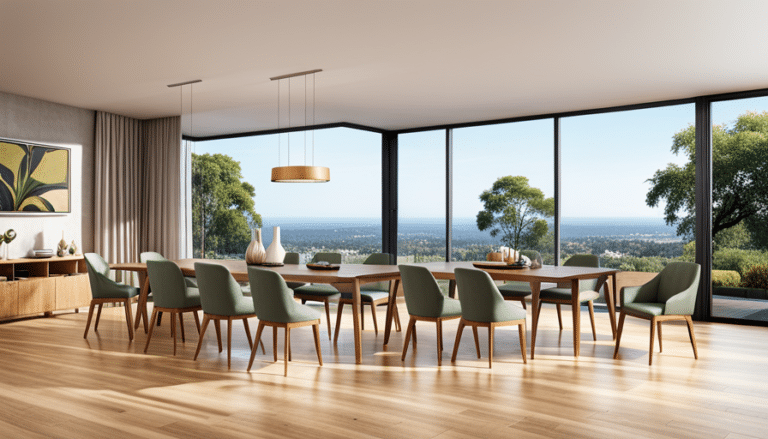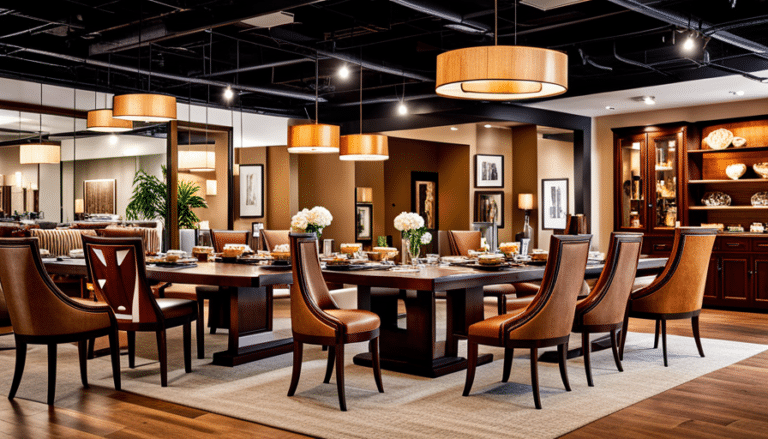Are Plastic Dining Chairs Suitable for Cafe?
Plastic dining chairs have become increasingly popular in various settings, including cafes. Their affordability, durability, and easy maintenance make them a practical choice for cafe owners looking to furnish their establishments with cost-effective seating options. Additionally, plastic chairs offer a range of design options, allowing for versatility in creating a desired aesthetic appeal that complements the cafe’s overall ambiance.
Comfort and ergonomics are crucial factors to consider when choosing seating for a cafe. While plastic chairs may not provide the same level of comfort as upholstered or cushioned options, they can be designed with ergonomic features to ensure a satisfactory seating experience for customers.
However, one must also consider the environmental impact and sustainability of plastic chairs. Given the growing concern for reducing plastic waste, cafe owners may want to explore alternative materials that align with their sustainability goals.
In this article, we will explore the suitability of plastic dining chairs for cafes, considering factors such as affordability, durability, maintenance, comfort, ergonomic design, aesthetic appeal, and environmental impact. By examining these aspects, cafe owners can make an informed decision that meets their specific needs and values.
Affordability and Durability of Plastic Chairs
The affordability and durability of plastic dining chairs makes them a viable option for cafes seeking cost-effective and long-lasting seating solutions.
Plastic chairs are often more affordable than their counterparts made from wood, metal, or other materials. This affordability can be particularly advantageous for cafes operating on a tight budget or looking to furnish a large number of seats.
Additionally, plastic chairs have a reputation for being highly durable. They are resistant to scratches and dents, making them suitable for high-traffic areas such as cafes. Unlike wooden chairs, plastic chairs are not prone to warping or rotting when exposed to moisture, which is another advantage in a cafe setting where spills are common.
However, it is important to consider the potential drawbacks of plastic chairs. They may not offer the same aesthetic appeal as other materials, and some people may find them less comfortable than padded or upholstered chairs.
Nonetheless, the affordability and longevity of plastic dining chairs outweigh these cons for cafes looking for a practical and cost-effective seating solution.
Easy Maintenance and Cleaning
Conveniently, these chairs require minimal effort for upkeep and sanitation. Plastic dining chairs are an ideal choice for cafes due to their easy maintenance and cleaning benefits.
Unlike other materials such as fabric or wood, plastic chairs are resistant to stains and spills, making them easy to wipe clean. With a simple wipe using a damp cloth and mild soap, any dirt or food residue can be easily removed, ensuring a hygienic seating option for customers.
Furthermore, plastic chairs are durable and can withstand frequent use without showing signs of wear and tear. This reduces the need for constant repairs or replacements, saving both time and money for cafe owners.
Additionally, plastic chairs are lightweight, making them easy to move and rearrange for cleaning purposes or accommodating larger groups.
With their low maintenance requirements, plastic dining chairs offer a practical and cost-effective solution for cafes, allowing owners to focus on providing a pleasant dining experience for their customers.
Comfort and Ergonomics
Comfort and ergonomics play a vital role in creating an enjoyable and relaxing seating experience for customers in a cafe setting. Comfortable seating is crucial for cafes, as it directly impacts customer satisfaction and their willingness to stay longer. Plastic dining chairs, when designed with ergonomic principles in mind, can provide a comfortable seating option for cafe patrons.
Ergonomic design focuses on creating seating that supports the body’s natural posture and movements, reducing strain and discomfort. Plastic dining chairs can be designed with features such as contoured backs, curved seats, and proper lumbar support, which contribute to a more comfortable sitting experience. Additionally, the lightweight nature of plastic chairs allows for easy movement and adjustment, ensuring customers can find their preferred seating position.
Furthermore, plastic chairs are often stackable, which is advantageous for cafes with limited storage space. This feature allows for efficient storage during closing hours or when rearranging the seating layout. Plastic chairs can also be easily cleaned and maintained, making them a practical choice for busy cafe environments.
Plastic dining chairs, when designed with comfort and ergonomics in mind, can provide a suitable seating option for cafes. Their ergonomic design features, lightweight nature, and easy maintenance make them a practical and comfortable choice for both cafe owners and customers.
Aesthetic Appeal and Design Options
Aesthetic appeal and design options for seating in cafes can greatly enhance the overall ambiance and atmosphere for customers.
Plastic chair trends have evolved significantly over the years, making them a suitable choice for cafes looking to create a modern and stylish environment. The versatility of plastic allows for a wide range of design options, enabling cafe owners to customize their seating to match their desired aesthetic. From sleek and minimalist designs to bold and vibrant colors, plastic chairs can be tailored to complement any cafe theme.
One of the key advantages of plastic chairs is their ability to be easily customized. Cafe owners can choose from a variety of finishes, including matte, glossy, or textured, to create a unique look for their establishment. Additionally, plastic chairs can be molded into various shapes and sizes, providing further customization options to fit the specific layout and design of the cafe.
Furthermore, plastic chairs offer durability and low maintenance, making them a practical choice for busy cafes. They are resistant to stains, scratches, and fading, ensuring that they remain in good condition even with regular use. Additionally, plastic chairs are lightweight, allowing for easy rearrangement and cleaning.
Plastic chairs offer a range of design options and customization opportunities for cafes. Their aesthetic appeal, durability, and low maintenance make them a suitable choice for creating an inviting and stylish atmosphere that can enhance the overall dining experience for customers.
Environmental Impact and Sustainability
To address the environmental impact and promote sustainability, the materials used for seating in cafes should be carefully selected and designed. Plastic dining chairs, often made from materials like polypropylene or polycarbonate, have gained popularity due to their affordability, durability, and design options. However, when considering their suitability for cafes, it is important to assess their environmental impact.
Plastic production contributes to carbon emissions, as it relies heavily on fossil fuels. The carbon footprint associated with plastic dining chairs is thus a concern. Additionally, plastic is not biodegradable, meaning that it persists in the environment for hundreds of years. This raises questions about the long-term sustainability of plastic seating options.
Recycling options for plastic dining chairs do exist, but they are not always readily available or efficient. Many recycling facilities struggle to process certain types of plastic, leading to limited recycling rates. This further complicates the environmental impact of plastic seating in cafes.
Considering the environmental impact and limited recycling options, alternative seating materials such as wood, metal, or sustainable fabrics may be more suitable for cafes aiming to prioritize sustainability. These materials often have lower carbon footprints and can be recycled or repurposed more effectively. By carefully selecting seating materials, cafes can contribute to reducing their environmental footprint and promote a more sustainable future.
Making an Informed Decision for Your Cafe
By carefully assessing the environmental impact and considering the long-term sustainability of various seating materials, cafe owners can make an informed decision that aligns with their commitment to reducing carbon emissions and promoting a more sustainable future.
When it comes to choosing suitable seating options for a cafe, such as plastic dining chairs, it is crucial to consider both the environmental implications and customer preferences.
Cafe furniture plays a significant role in creating an inviting atmosphere for customers. Plastic dining chairs have gained popularity due to their affordability, durability, and ease of maintenance. However, their environmental impact must be carefully evaluated. Plastic is derived from non-renewable fossil fuels and has a significant carbon footprint. Furthermore, plastic waste can take hundreds of years to decompose, contributing to the global plastic pollution problem.
Considering customer preferences is equally important when selecting seating materials for a cafe. While some customers may prioritize comfort and aesthetics, others may be concerned about the environmental impact of their choices. By offering a variety of seating options, cafe owners can cater to different customer preferences and create a welcoming environment for all.
When making decisions about cafe furniture, cafe owners should consider the environmental impact and long-term sustainability of seating materials. While plastic dining chairs may have certain advantages, such as affordability and durability, their environmental implications should not be overlooked. By offering a range of seating options that align with customer preferences, cafe owners can make informed choices that promote a more sustainable future.
Frequently Asked Questions
Can plastic dining chairs be used outdoors?
Plastic dining chairs can be used outdoors due to their durability and weather resistance, making them a suitable alternative to wooden dining chairs. The benefits of using plastic chairs outdoors include their lightweight, easy maintenance, and ability to withstand outdoor elements.
Can plastic dining chairs support heavy weight?
Plastic dining chairs can support heavy weight, making them suitable for commercial settings. Additionally, they can be recycled, making them a sustainable choice. Their durability and eco-friendly nature make them a practical option for cafes.
Are plastic dining chairs stackable for easy storage?
Plastic dining chairs have the advantage of being stackable, allowing for easy storage in a cafe setting. However, they may lack durability and may not provide the same level of comfort as other materials. To maintain and clean, regular wiping with mild soap and water is recommended.
Can plastic dining chairs be customized with different colors or patterns?
Plastic dining chairs can be customized with various colors and patterns, allowing for flexibility in design. Additionally, they offer durability and easy maintenance, making them a practical choice for both cafes and other dining establishments.
Are plastic dining chairs resistant to UV rays and fading?
Plastic dining chairs generally have good resistance to UV rays and fading, making them suitable for outdoor use. However, compared to other materials, their durability and longevity may be lower. Pros of using plastic dining chairs in a cafe setting include their affordability and easy maintenance, but cons include potential for cracking and limited aesthetic options.
Conclusion
In conclusion, plastic dining chairs can be a suitable choice for cafes due to their affordability, durability, easy maintenance, and cleaning. They also offer comfort and ergonomic support to customers. With a wide range of design options and aesthetic appeal, plastic chairs can enhance the overall ambiance of a cafe.
However, it is essential to consider the environmental impact and sustainability of using plastic furniture. By weighing these factors, cafe owners can make an informed decision that balances functionality, aesthetics, and sustainability.

